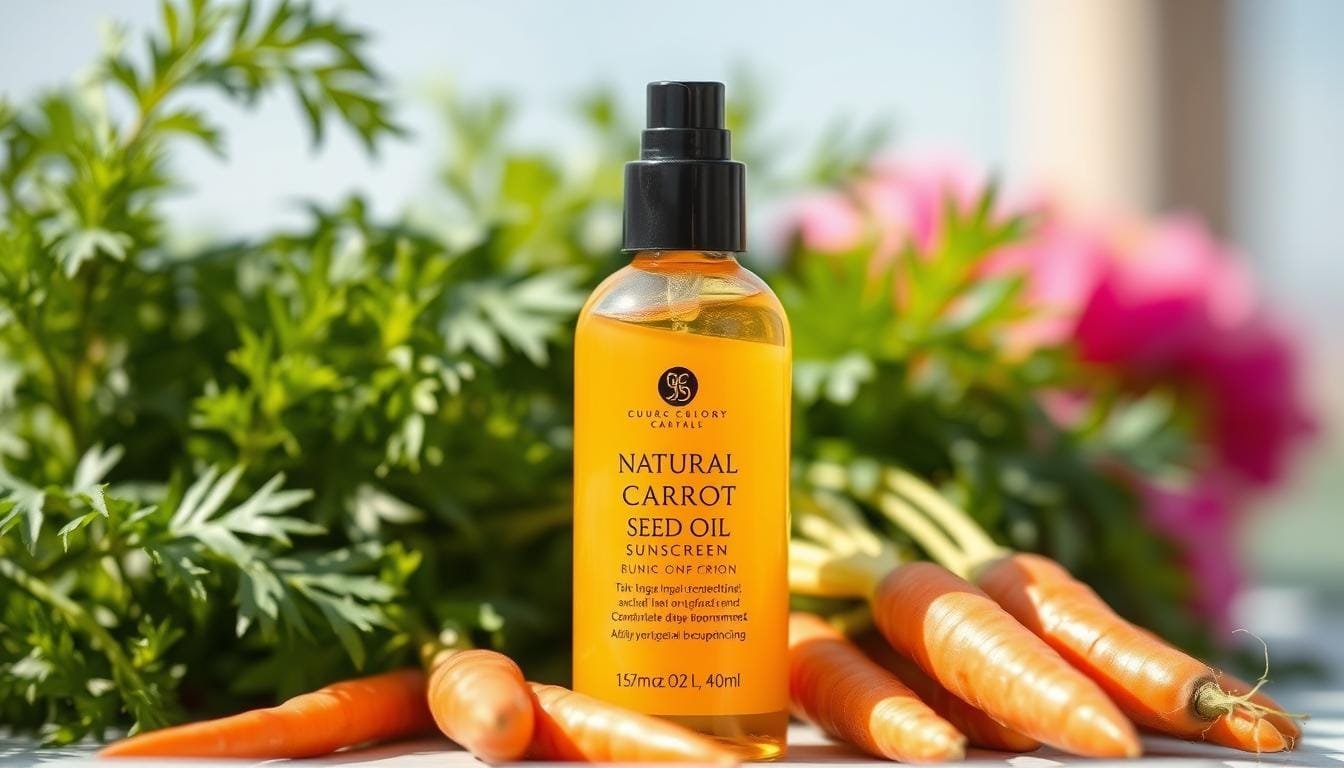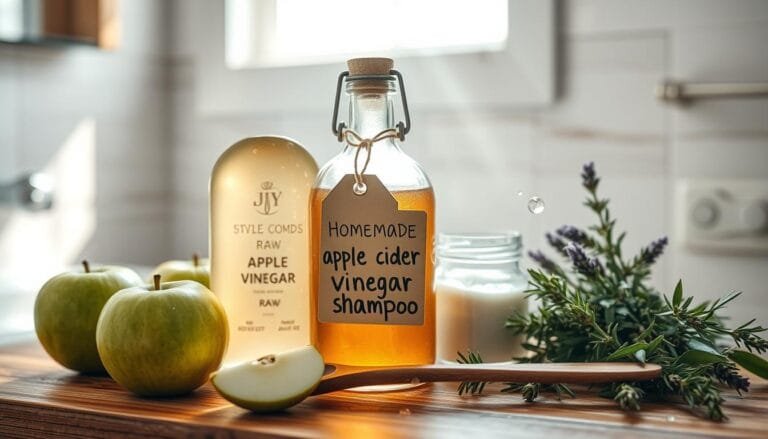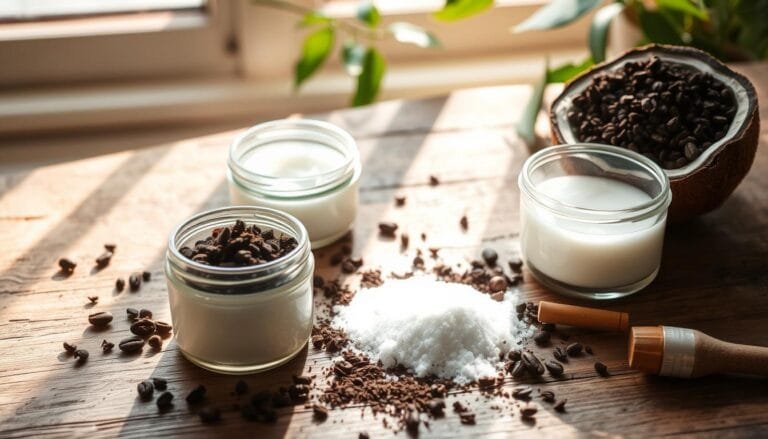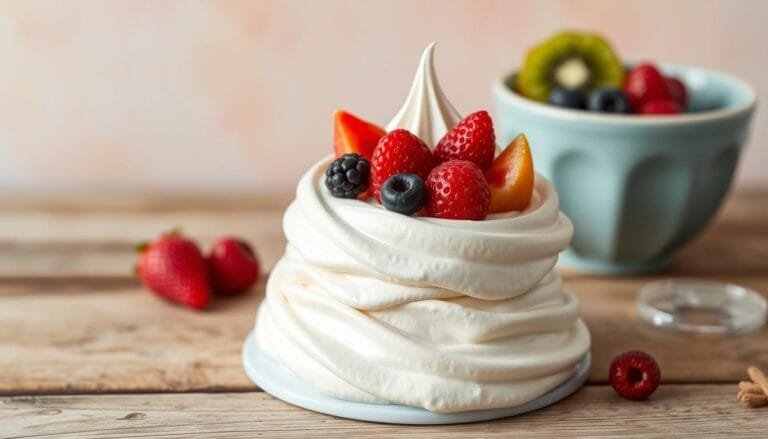Summer is here, and the sun’s UV rays are strong. Many sunscreens have harmful chemicals. That’s why I found a great solution: making my own homemade sunscreen with carrot seed oil.
Carrot seed oil is a natural hero, with an SPF of 35-40. It makes my sunscreen effective and safe from harsh chemicals. Plus, it’s cheaper and better for the planet.
Next, we’ll look at how carrot seed oil protects us from the sun. We’ll also see why natural ingredients are better for sun protection. And I’ll show you how to make your own sunscreen. Let’s explore nature’s way to keep our skin safe this summer.
Understanding UV Protection and Natural Alternatives
Too much sun can harm our skin in many ways. It’s important to know about UV rays and their effects. UVB rays cause sunburns, while UVA rays lead to aging and skin cancer risks.
Why We Need Protection from Sun Damage
Sun damage can cause wrinkles, age spots, and even skin cancer. Protecting our skin from these rays is key to keeping it healthy and young.
The Difference Between UVA and UVB Rays
UVA rays, making up 95% of UV radiation, damage skin deeply and cause aging. UVB rays, on the other hand, cause sunburn and can lead to skin cancers.
Chemical vs Physical Sun Barriers
Chemical sunscreens absorb UV rays. Physical sunscreens like zinc oxide and titanium dioxide reflect them. The FDA says zinc oxide and titanium dioxide are safe and effective.
Some natural oils may offer some sun protection. But, they shouldn’t be the only thing you use. You need a sunscreen with broad-spectrum coverage and at least SPF 30 for full protection.
The Science Behind Carrot Seed Oil Sunscreen
Carrot seed oil is seen as a natural sunscreen option. But, its effectiveness as a standalone sunscreen is not clear. It’s said to have an SPF of 38-40, but this comes from old studies, not real-world tests.
Studies on its UV absorption are mixed. Both essential and fatty carrot seed oils are used in cosmetics. But, how well they protect from the sun is not proven. More research is needed to know if carrot seed oil is a good natural sunscreen.
| Ingredient | In Vitro SPF | In Vivo SPF |
|---|---|---|
| Carrot Seed Oil | 0.0 – 0.4 | 1.2 – 2.8 |
| Coconut Oil | 0.0 – 0.4 | 1.2 – 2.8 |
| Raspberry Seed Oil | 0.0 – 0.4 | 1.2 – 2.8 |
| Rosehip Seed Oil | 0.0 – 0.4 | 1.2 – 2.8 |
| Wheat Germ Oil | 0.0 – 0.4 | 1.2 – 2.8 |
| Tamanu Oil | 11.2 | – |
Carrot seed oil might offer some UV protection. But, it’s not enough on its own. It could work better with other natural ingredients. Yet, its exact SPF is not known.
Be careful with claims about carrot seed oil’s sunscreen benefits. Stick to science when picking sunscreens. More research is needed to know its true sun safety value.
Benefits of Using Natural Ingredients for Sun Protection
Natural ingredients like carrot seed oil, coconut oil, and shea butter do more than block UV rays. They nourish your skin, adding value to your sun protection routine.
Skin-Nourishing Properties
Carrot seed oil and coconut oil are full of antioxidants. They help fight damage from UV rays. These oils also moisturize and soothe your skin, reducing sunburn and aging.
Shea butter creates a protective barrier and keeps moisture in. It’s great for your skin’s health.
Environmental Impact Considerations
Many sunscreens contain chemicals that harm coral reefs and oceans. DIY sunscreens with natural sunscreen ingredients are better for the environment. They help keep our oceans healthy.
Cost-Effectiveness of DIY Solutions
Homemade sunscreens are cheaper than store-bought ones. Using affordable sunscreen ingredients like natural sunscreen ingredients saves money. You get natural sun protection without spending a lot.
Choosing natural ingredients for sun protection has many benefits. It’s good for your skin and the planet. Exploring natural sunscreen ingredients can improve your sun safety and health.
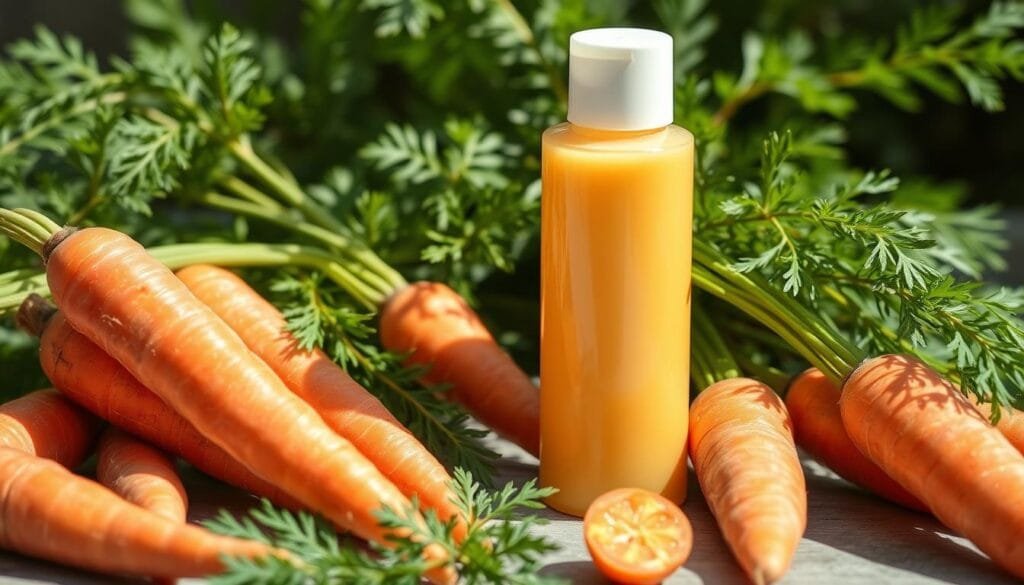
Essential Ingredients for Homemade Carrot Seed Sunscreen
Making your own sunscreen at home is a great way to protect your skin. It also lets you use natural ingredients that are good for your skin. Let’s look at the main ingredients you need for a homemade carrot seed oil sunscreen.
- Zinc Oxide – This mineral-based active ingredient provides broad-spectrum UVA and UVB protection, with an SPF range between 2-20 depending on the amount used.
- Carrot Seed Essential Oil – Carrying a natural sun protection factor (SPF) between 35-40, this oil adds an extra layer of defense against the sun’s rays.
- Red Raspberry Seed Oil – With an impressive SPF of 25-50, this ingredient boosts the overall sun-blocking capabilities of the formula.
- Coconut Oil and Shea Butter – Both of these skin-nourishing oils provide a modest SPF of 4-6, while also moisturizing the skin.
- Almond Oil – Similar to coconut and shea, almond oil offers an SPF around 5, adding to the natural protection.
The recommended natural sunscreen recipe makes about 10 servings. It can last up to six months if stored in a cool, dry place or in the fridge. With the right mix of these ingredients, you can make a safe, chemical-free sunscreen for the summer.
Step-by-Step Guide to Making Your Own Natural Sunscreen
Making your own sunscreen is easy and rewarding. It protects your skin from UV rays this summer. Use natural ingredients like carrot seed oil, zinc oxide, and shea butter. This way, you get sun protection without synthetic chemicals.
Basic Recipe Instructions
To start, you’ll need a few ingredients:
- 4 oz non-toxic, unscented lotion or aloe vera gel
- 1 oz zinc oxide powder (provides an SPF of 20)
- 12 drops carrot seed oil (provides an SPF of 35-40)
Mix the lotion or aloe vera gel, zinc oxide, and carrot seed oil in a bowl. Stir until the zinc oxide is fully mixed in. Be careful not to breathe in the powder while mixing.
Tips for Proper Mixing
Use a kitchen scale to measure the ingredients accurately. This ensures your sunscreen has the right SPF. Make sure to mix the ingredients well to avoid clumps and ensure even distribution of zinc oxide.
Storage Guidelines
After making your sunscreen, store it in clean, airtight glass jars or tubes. It will last 3-6 months in a cool, dry place. Always shake or stir the sunscreen before using to keep it smooth.
This DIY sunscreen tutorial lets you make your own sunscreen for summer. It only takes a few minutes to prepare. You’ll have a natural, nourishing sun protectant ready to go.
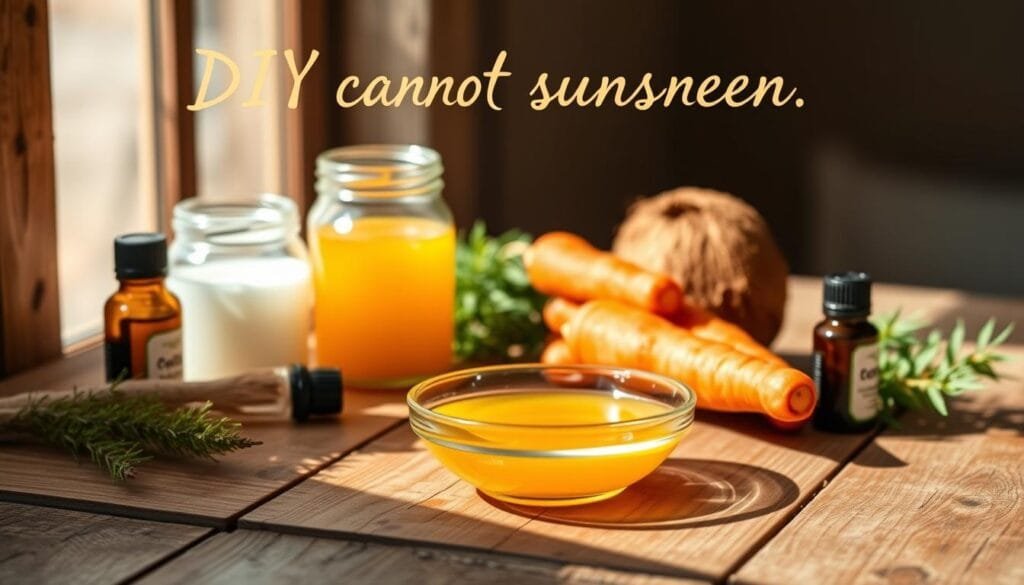
Understanding SPF Levels in Natural Sunscreens
I’m passionate about natural skincare and making my own sunscreens. But, figuring out SPF levels in these homemade sunscreens can be confusing. Let’s explore the science behind SPF in natural sunscreens and how to get the right protection.
The SPF in homemade sunscreens mainly comes from zinc oxide. This mineral reflects and scatters UV rays. It protects against UVA and UVB radiation.
- For an SPF range of 2-5, use around 5% zinc oxide in your sunscreen formula.
- For an SPF range of 6-11, increase the zinc oxide concentration to 10%.
- For an SPF range of 12-19, aim for a 15% zinc oxide concentration.
- And for an SPF of 20 or higher, you’ll want to use around 20% zinc oxide.
Keep in mind, these are just estimates. The actual SPF of your homemade sunscreen can change. This depends on the zinc oxide quality, the formula, and how thick you apply it. Homemade SPF calculations aren’t FDA-approved, so treat these as guidelines, not exact numbers.
Higher SPF levels mean more zinc oxide, which can make the sunscreen thicker and whiter. This might not be perfect for everyone. Finding the right balance between SPF and how it looks is key.
| SPF Range | Zinc Oxide Concentration |
|---|---|
| 2-5 | 5% |
| 6-11 | 10% |
| 12-19 | 15% |
| 20+ | 20% |
Remember, the natural SPF of your homemade sunscreen is just one part. How you apply it, reapply it, and stay sun-safe are also key. These practices help ensure you’re fully protected from the sun’s harmful UV rays.
Safe Sun Practices When Using Natural Sunscreen
Proper application and reapplication of natural sunscreen is key for sun protection. Safe sun practices help your homemade sunscreen work best. They keep your skin safe from UV rays.
Optimal Application Methods
Apply a generous amount of sunscreen, about 1 ounce (30 ml) for your whole body. Spread it evenly over all exposed skin. Don’t forget the lips, ears, and around the eyes. Reapply every 2 hours, or more if swimming or sweating.
Reapplication Guidelines
- Reapply sunscreen every 2 hours, or more often if swimming or sweating.
- Reapply after towel drying, vigorous activity, or extended time in the water.
- Check the label for specific reapplication instructions, as natural sunscreens may have different requirements.
- Seek shade during the sun’s peak hours, typically between 10 am and 4 pm.
- Wear protective clothing, hats, and sunglasses to complement your natural sunscreen.
Natural sunscreens offer great protection, but no sunscreen is waterproof or sweat-proof. Staying consistent with reapplication is key for sun safety.
| Sun Safety Practices | Importance |
|---|---|
| Applying Sunscreen Generously | Ensures adequate coverage and protection |
| Frequent Reapplication | Maintains sunscreen effectiveness over time |
| Seeking Shade | Reduces direct sun exposure during peak hours |
| Wearing Protective Clothing | Adds an extra layer of UV defense |
By following these sunscreen application tips and sun safety practices, you can enjoy the outdoors safely. Your skin will be well-protected from the sun’s harmful effects.
Common Myths About Natural Sunscreen Protection
There are many myths about natural sun protection that need to be cleared up. I’m here to share the truth about natural sunscreen alternatives. This is for those who care about keeping their skin healthy.
Myth: All natural oils provide high SPF. Fact: Some natural oils, like raspberry seed oil, offer moderate sun protection. They have an SPF of about 28. But, many other oils have much lower SPF values, often between 2-8. You can’t rely on these oils alone for sun protection.
Myth: Homemade sunscreens are as effective as commercial ones. Fact: Homemade sunscreens can be hit or miss. They haven’t been tested as thoroughly as commercial products. It’s key to do your research and carefully make your DIY sunscreen to ensure it works well.
- A 2021 study found that in vivo SPF values for most natural oils range between 2.5 and 4.5, while in vitro values are even lower, from 0.01 to 0.6.
- Carrot seed oil is claimed to have an SPF of 38-40, but this is based on a 2009 study that tested a sunscreen product containing carrot, not specific carrot seed oil alone.
Myth: Natural sunscreens don’t need reapplication. Fact: All sunscreens, natural or conventional, need to be reapplied regularly. This is to keep their protective benefits. Always follow the recommended guidelines for reapplication to stay safe in the sun.
Myth: Darker skin doesn’t need sunscreen. Fact: Everyone, regardless of skin tone, should use sunscreen. It protects against UV radiation harm. Even darker skin can suffer from sun damage and skin cancer risks.
By knowing and debunking these myths, you can make better choices for natural sun protection. This way, you can enjoy the outdoors safely this summer.
Waterproof Version: Enhanced Protection for Swimming
For sun protection while swimming, a water-resistant sunscreen is key. You can make a waterproof version of your natural carrot seed oil sunscreen at home. Adding a few ingredients gives you extra protection that lasts through pool or ocean dips.
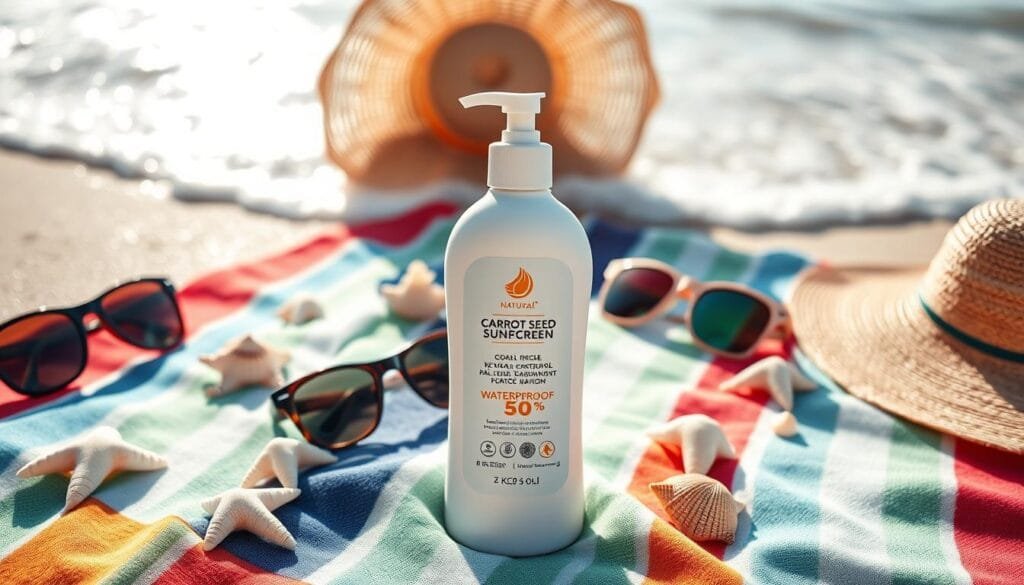
Additional Ingredients Needed
- 2 ounces of grated beeswax
- Refillable silicone squeeze tubes for easy application
Modified Preparation Steps
- Melt the beeswax in a double boiler before mixing it with the other sunscreen ingredients.
- Let the mixture cool a bit before adding the lotion and zinc oxide.
- Then, stir in your favorite essential oils for extra benefits and scent.
- Pour the waterproof swimming sunscreen recipe into the containers. Let it cool fully before use.
Beeswax adds a water-resistant layer, keeping your waterproof natural sunscreen effective in water. The sunscreen might be thicker, needing more rubbing to spread evenly. But the extra protection is worth it.
“Our homemade sunscreen recipe is tested and approved for use during hot and sunny conditions, providing reliable protection for all your aquatic adventures.”
Customizing Your Natural Sunscreen Formula
Making your own natural sunscreen is rewarding and empowering. You can adjust it to fit your skin type and preferences. Let’s look at how to fine-tune your homemade sunscreen for the best SPF, coverage, and nourishment.
Adjusting SPF Levels
One great thing about making your own sunscreen is controlling the SPF. The amount of zinc oxide in your recipe affects the SPF. Here’s a simple guide:
- 2-5% zinc oxide provides SPF 2-5
- 6-11% zinc oxide provides SPF 6-11
- 12-19% zinc oxide provides SPF 12-19
- 20% or more zinc oxide provides SPF 20+
Start with a recipe that has about 20% zinc oxide for at least SPF 20. You can adjust the zinc oxide to get your desired SPF. Remember, higher SPF means more UV protection.
Tinting for a Personalized Glow
You can tint your personalized sunscreen with cocoa powder for a customized look. Start with ½ teaspoon of cocoa powder and add more until you get the right shade. This natural tint blends well with your skin.
Scenting with Essential Oils
Adding your favorite essential oils can make your custom SPF sunscreen smell great. But, avoid citrus-based oils as they can make your skin more sensitive. Choose gentler scents like lavender, chamomile, or geranium for a luxurious feel.
Tailoring to Skin Type
Change the carrier oils in your sunscreen based on your skin type. For oily skin, use lighter oils like jojoba or grapeseed. For dry skin, add nourishing oils like avocado or almond. Always do a patch test to make sure your tinted natural sunscreen works well for you.
“Customizing your natural sunscreen allows you to create a product that not only protects your skin but also caters to your unique needs and preferences.”
Enjoy the flexibility of homemade sunscreen. Try different recipes to find the perfect personalized sunscreen for your sun protection and skincare needs.
Safety Considerations and Best Practices
Exploring natural sunscreen, I focus on safety and effectiveness. Before trying new products, I check with my doctor, if I have health issues or allergies. It’s also key to do a patch test to avoid any bad reactions.
Storing my homemade sunscreen is important. I keep it in a cool, dry spot. If it smells off or looks different, I toss it and make a new batch. Natural sunscreens are good, but they might not protect as well as commercial ones. So, I also use other sun protection methods like staying in the shade and wearing clothes that cover my skin.
My aim is to find safe, natural sun protection. I keep researching, follow safety tips, and listen to my skin. This way, I can keep myself and my family safe from the sun this summer.
